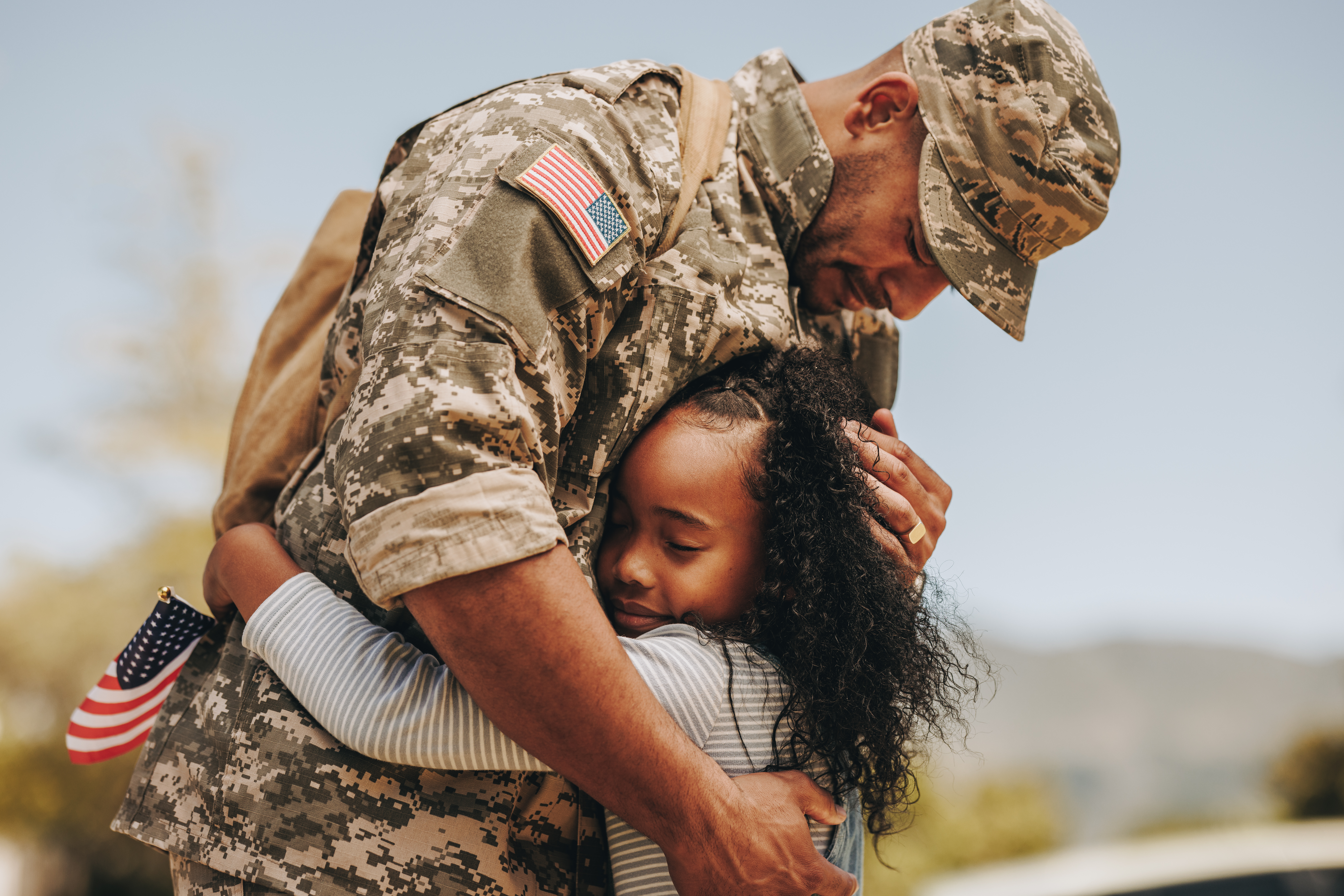Across the country, millions of veterans face unique challenges after returning to civilian life. Despite their sacrifices, many continue to experience housing insecurity, homelessness, and difficulties accessing the care and resources they need. The transition from military to civilian life can be complex—often compounded by service-connected disabilities, mental and physical health struggles, and economic hardship.
Federally assisted housing programs play a crucial role in addressing these challenges. By providing stable, affordable homes and connecting veterans to supportive services, these programs help those who served our country rebuild their lives, achieve independence, and maintain long-term stability.
History of veterans and housing
The link between federally assisted housing and veterans has been in place for decades. Originally spurred by wartime needs, public housing units were built to provide affordable housing for workers near factories manufacturing military goods to support World War II. Many public housing properties were targeted to help veterans transition home. In 1944, the G.I. Bill provided qualifying veterans and their family members with financial assistance with school and training programs, as well as government-guaranteed home loans that required little to no down payment. Yet, many faced disproportionate difficulty using their benefits due to discrimination.
Today, federal housing programs continue to serve veterans nationwide. In 2023, over 269,000 veteran households received support through rental assistance programs, including public housing, Housing Choice Vouchers (HCVs), and Section 8 Project-Based Rental Assistance. These programs also support the families of nearly 6,000 active service members.i
Rental assistance programs support the families of thousands of veterans and active servicemembers
| 269,000 Veteran Households | Nearly 6,000 Families of Active Service Members |
PAHRC analysis of American Housing Survey 2023. Includes Public Housing, Housing Choice Vouchers, and Section 8 Project-Based Rental Assistance.
Why housing assistance matters for veterans
Veterans face a unique set of challenges when transitioning back into civilian life. Housing stability is an important piece of the puzzle for veterans returning home.
Many veterans return home with a disability
Between 2008 and 2022, the share of veterans with service-connected disabilities steadily increased, with only 51% of veterans returning home without a disability in 2022. These disabilities include severe physical injuries, such as amputations and spinal cord damage, as well as invisible conditions like traumatic brain injuries, Post Traumatic Stress Disorder (PTSD), and hearing loss.
The rise in service-related disabilities highlights the growing need for housing solutions tailored to veterans with complex health needs. As veterans age, these conditions often worsen or require increasing levels of care and home renovation. For example, veterans face a greater risk of falls in later life compared to non-veterans. They may require homes that are retrofitted for mobility, featuring amenities such as ramps, wider doorways, and accessible showers.
In addition to physical health challenges, veterans are disproportionately affected by mental health conditions. These conditions are often associated with an increased risk of housing instability and homelessness.
Housing assistance helps the most vulnerable veterans find stability
Reintegrating into civilian life can be difficult, even for veterans without physical or mental health concerns. Many must adjust to new routines, navigate employment challenges, and rebuild social support outside of the structured military environment. For veterans experiencing homelessness or unstable housing, this transition becomes even harder. Stable housing is often the foundation on which recovery begins. Without it, achieving employment and education goals, accessing adequate medical care, and maintaining social connections may be more challenging.
One of the most important resources available to veterans is the Housing and Urban Development–Veterans Affairs Supportive Housing (HUD-VASH) program. HUD-VASH is not just a housing program, but an integrated approach that combines rental assistance from the Department of Housing and Urban Development (HUD) with case management and clinical services from the Department of Veterans Affairs (VA). Local public housing authorities (PHAs) administer the housing vouchers, while VA case managers provide clinical and supportive services, such as counseling, healthcare coordination, and referrals. The partnership between local housing authorities and the VA ensures that veterans receive housing and are also connected to ongoing support.
The impact of HUD-VASH and similar programs is well-documented. Veterans who receive HUD-VASH assistance are more likely to remain stably housed and access medical and mental health care compared to their unassisted or homeless peers. VASH addresses the intersecting needs of veterans. It can reduce stress, offer safety and security, and serve as a foundation for accessing other critical services, including healthcare, counseling, and job training.
However, housing alone is not always enough. Many veterans in the VASH program are more likely to report medical, mental, or behavioral health challenges, underscoring the need for supportive services and continued investment in case management. Expanding these services can help ensure that veterans not only obtain housing but also receive the support they need to improve their health and economic mobility.
Impact of supportive housing
Through supportive housing programs, such as HUD-VASH, the U.S. has made meaningful strides in reducing veteran homelessness. Since 2009, the number of veterans experiencing homelessness has decreased by 55%. In fact, veterans are the only group that continues to see declining rates of homelessness year-over-year. This is a testament to the fact that housing stability and supportive services, provided through HUD-VASH and similar initiatives, play a significant role in supporting veterans across the country. Between 2008 and 2024, HUD-VASH awarded over 115,000 vouchers to veterans and their families, helping them transition from homelessness or unstable living situations into permanent, stable housing.
Research shows these vouchers make a meaningful difference. For every HUD-VASH voucher issued, the number of permanent supportive housing units increases by 0.9, and the number of homeless veterans decreases by one. Without the program, it’s estimated that veterans experiencing homelessness in the U.S. would be more than triple what they are today.
While significant progress has been made in reducing veteran homelessness, HUD estimates that more than 32,000 veterans were homeless in 2024. Additional investment in supportive housing and services can continue to make inroads in reducing veteran homelessness.
How PHAs can help veterans
Supportive housing is a proven method to support veteran homelessness. Many PHAs go above and beyond to ensure the program's success, implementing creative ways to reduce veteran homelessness and improve housing stability. For example, the Housing Authority of the City of Los Angeles (HACLA) has partnered with local government offices, the VA Greater Los Angeles Healthcare System, and other local housing agencies to launch House Our Vets, a strategic local campaign designed to expedite the housing process for veterans experiencing homelessness. The program adds staff dedicated to housing veterans and streamlines the path to housing for both veterans and property owners, providing veteran housing. Building on HUD-VASH, HACLA provides moving assistance, offers signing bonuses, covers security deposits, provides utility assistance to help units become move-in ready, and finances up to $2,000 for unit repairs.
Click here to learn more about HACLA’s efforts to reduce veteran homelessness in their community.
Ultimately, PHAs, landlords, and community leaders all play an essential role in enhancing veteran housing stability, connecting veterans to supportive services, and revitalizing local communities. PHAs interested in engaging in this work can consider:
- Applying for HUD-VASH vouchers
- Establishing waiting list preferences for veterans
- Launching landlord outreach campaigns
- Forming partnerships with organizations that support veterans
For decades, housing providers have made a difference in the lives of veterans across the country, supporting efforts that cut veteran homelessness in half between 2010 and 2020. As we honor veteran’s service, let’s continue the work of ensuring that no veteran is left without stability - especially when it comes to something as fundamental as housing. Whether you're a housing professional, community leader, landlord, or advocate, there are actionable ways to contribute to a more stable, equitable future for our veterans.
This article is for general information only. HAI Group® makes no representation or warranty about the accuracy or applicability of this information for any particular use or circumstance. Your use of this information is at your own discretion and risk. HAI Group® and any author or contributor identified herein assume no responsibility for your use of this information. You should consult with your attorney or subject matter advisor before adopting any risk management strategy or policy.
HAI Group® is a marketing name used to refer to insurers, a producer, and related service providers affiliated through a common mission, management, and governance. Property-casualty insurance and related services are written or provided by Housing Authority Property Insurance, A Mutual Company; Housing Enterprise Insurance Company, Inc.; Housing Specialty Insurance Company, Inc.; Housing Investment Group, Inc.; and Housing Insurance Services (DBA Housing Insurance Agency Services in NY and MI).
[i] PAHRC analysis of American Housing Survey 2023. Includes Public Housing, Housing Choice Vouchers, and Section 8 Project-Based Rental Assistance.




.png)
